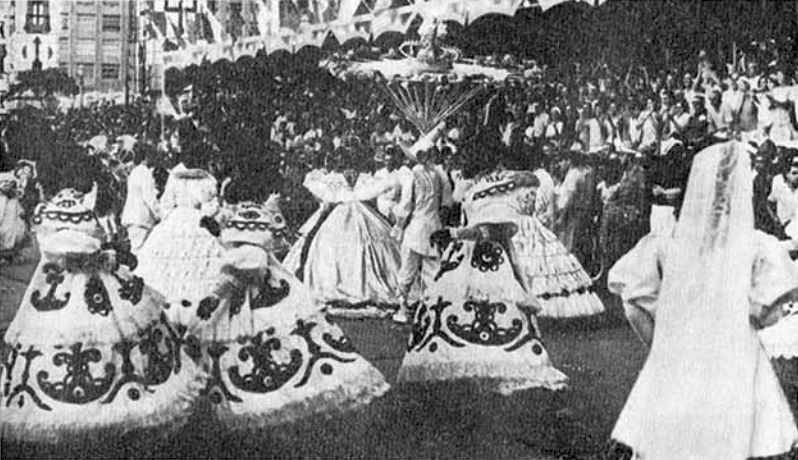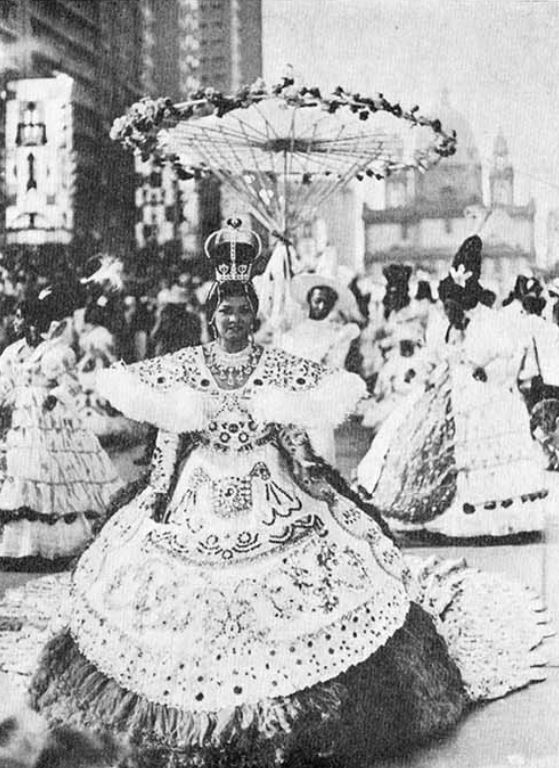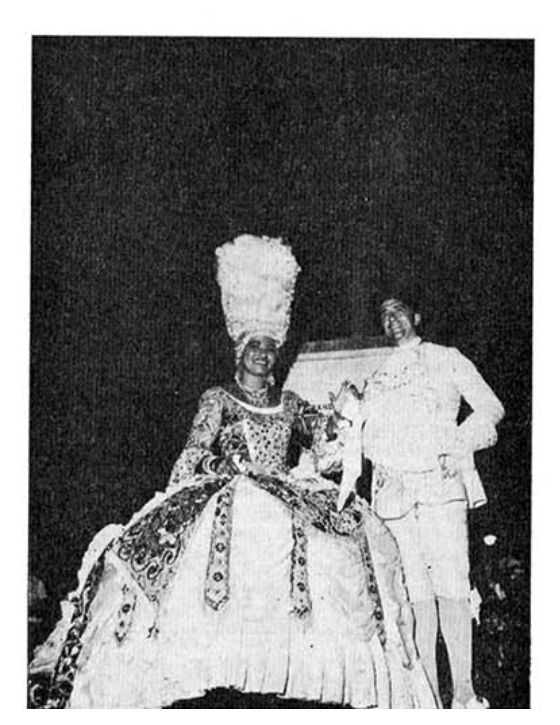|
Plinio Corrêa de Oliveira
The Love of Tradition In The Most Famous Brazilian Festival
Ambience, Customs and Civilization, “Catolicismo” Nº 163 – July 1964
|
|
|
One of the most audacious deceptions of the Revolution is the way they present the people as an obscure, agitated and disordered “mare magnum,” always on the verge of exploding, in the unfathomable mysterious depths of the people, the Revolution says, there is hatred, envy and ruthlessness continually fermenting and threatening, ready, upon encountering the smallest obstacle, to spill over and demolish the whole social structure. Considered in this way, the “people” would be synonymous with Revolution and, therefore, the antonym of hierarchy and tradition. The Revolution insinuates and at times even openly proclaims this about people in general; but it particularly delights in insistently maintaining this about the large conglomerations of workers in large cities and especially the slums. Here, they say, human hyenas live ready and waiting for the right moment to run rampant though the city, subduing it, destroying it and implanting over its ruins the standard of triumphant misery.
The Revolution can only lie. Anything true that it might say is tainted with a prejudicial insinuation or some exaggeration. This is done to efficiently serve the spread of ignorance and the progress of error and evil. Thus, in Brazil, this viewpoint of the disposition of the common people is exaggerated in some ways and completely false in others. What is more true is the indifference of not explicit antipathy that the rural and urban population – even in Rio de Janeiro and São Paulo – express in face of the Bolshevist propaganda. But the Revolution, which has an even greater hidden design in what it passes over in silence than in what it openly pronounces, says nothing about this aspect of reality. Instead, it continues its interminable clatter of slogans about the agitated masses ready to explode, etc.
Let us turn our attention to Rio de Janeiro. The urban masses of Guanabara are dreaming about communism, or so the Revolution furtively snarls here and boldly proclaims in the exterior. By some irrepressible idiosyncrasy, they can hardly wait to destroy every structure, every symbol and every note symbolic of our present-day bourgeois society in Rio and “a fortiori,” of Brazil’s aristocratic and monarchical past. They would replace all this with new aspects of the proletarian society. In other words, Brazil’s traditions are odious to them, as they would be to every communist. According to them, the masses of Rio hate the institutions of Brazil’s past with the same hatred that the members of the Russian Communist Party (not to be confused with the Russian “tout court”) have for the czarist past of their country. What would the Communist Party of the Soviet Union do, for example, if citizens wearing kingly imperial crowns dressed as counts and marquises processed festively through the streets of Moscow for the simple joy of wearing these costumes and delighting the applauding onlookers? Especially since they are applauding the beauty of these adornments and costumes, symbols of the princes, the institutions and the style of life that communism detests most. They would mobilize tanks, cannons, tear gas and their every possible means for political repression to stop this festival. Because what this stands for and what communism is are things that clash when they meet. (“hurlent de se trouver ensemble.”) And it would be understandable as well as justifiable for the Russian Communist Party to behave like this, since the coexistence of these things causes even greater clashing. Where one is, the other most absolutely cannot be.
This picture shows some picturesque scenes of the Rio Carnival of 1964. Dressed as king and queen in costumes and styles of the nobility and courtly pomp of bygone days, these members of the school of the samba parade by, happy in evoking images from Brazil’s past. A well-known Rio magazine printed a most fitting title to an article covering the event: “Modest Workers and Simple Maidens Are Transformed into Kings, Princes, Counts, Queens and Marquises for a Night.” One of the main themes of this year’s festival was the marriage of Dom Pedro I to Empress Amélie of Leuchtenberg. Obviously, these costumes show no dull and scholarly fidelity to what was really worn in the time that they evoke. The popular imagination, rich in engendering the fabulous, present here the royalty and aristocracy as they imagine it. And the characteristic “charm” of the Negro adds an animated and delightful note to the assemblage. This is Brazil’s remote tradition, as it has endured in the most profound recesses of the people’s soul. And you, O mother of lies, O fallacious Revolution, you who say that the people hate Tradition – what do you say about this? |
|






